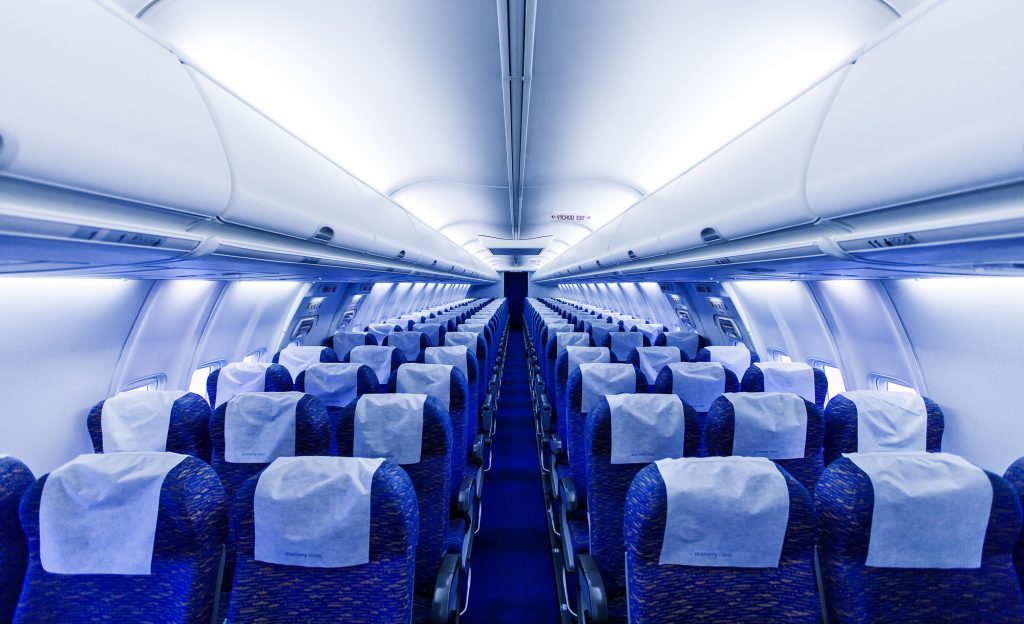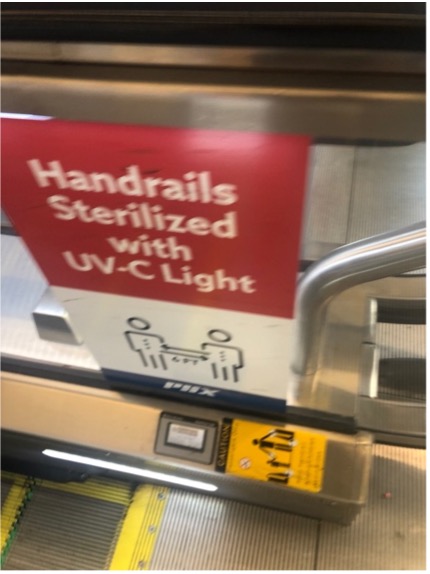The transportation industry is a complex web of multi-faceted operations with the objective of getting objects (or people) from A to B as smoothly and as safely as possible. It is a massive industry sector of the global economy with the U.S. trucking industry accounting for 791.7 billion U.S. dollars alone. Trucking is just one piece of the transportation organism. There are 3 main transportation environments that are commonplace in today’s world: shipping/sea transit, ground transportation, and air transportation (space transport is also an emerging industry). As traveling becomes easier for both objects and people, infection prevention and control has been an ever-growing focal point for this industry. Last year only accelerated the process of putting a premium on infection prevention.

What is the Problem?
4 major concerns have arisen from the COVID-19 pandemic as primary focal points of transportation infection control. We need to mitigate risk in high-traffic environments (air/surface disinfection), crowd control and exposure times, multi-drug resistant pathogens, and correcting the misinformation surrounding current protocols within the industry.
Mitigating Risk in High-Traffic Environments
It’s no question people carry diseases and all sorts of bacteria. COVID-19 has made us all aware of the fact that people are vehicles for disease and packing like sardines into an airplane or bus with people from many different geographic regions increases the risk of infectious disease. So how do we mitigate the risk?
Air Purification
How many times do you hear someone cough or sneeze on an airplane or bus? What do you think the chances are of them properly covering the droplets that are coming out of them?
According to the NCIB, “exposure to airborne biological hazards in an ever expanding urban transport infrastructure and highly diverse mobile population is of growing concern, in terms of both public health and biosecurity.”
The droplets produced during a sneeze or cough can remain suspended in the air for some time. The transmission of dangerous airborne pathogens from source to host is a complex process involving many pathways, although when people crowd together it is a bit simpler for these pathogens to transmit to others.
With the high levels of traffic that airports see daily, air purification needs to be at the heart of their infection prevention plans. Currently HVAC systems are retrofitted and designed with HEPA filters that capture particulates as they pass through the system. A major concern with this is the high cost associated with replacing these filters. Another worry is that traditional HEPA filters are not as efficient as advertised, the technology is outdated and can be replaced with newer technologies like Electric Wind Technology found in the AirSoap air purifier. Contrary to HEPA filters that capture particulates down to 300nm (nanometers), this technology can capture particles as small as 14nm!
“AirSoap’s™ Electric Wind Technology™ generates a high-energy plasma field that kills bacteria and viruses and polarizes airborne particles. The bacteria are then collected in a filter-less graphene system, resulting in air that is cleaner and healthier than what traditional filter-based air purifiers can provide.”
Surface Disinfection
You may have heard the CDC’s recent babblings on how surface disinfection can take a back seat to air purification…. this is illogical. Have you ever heard the phrase, “what goes up, must come down?” Even airborne particles stay suspended only for a finite time before coming down to the ground where they can survive on surfaces for days, depending on the bacteria. Surface disinfection is the perfect companion of air purification and needs to be held close to one’s heart with regards to transportation infection control.
The dispersion and transfer of infectious diseases deposited on various surfaces and materials also offer a major pathway for transmission for these dangerous pathogens. Some high-touch, high-risk surfaces include skin, doorknobs, railings, seats, escalator handrails, ATMs, check in screens, cell phones/tablets, and more. Again, focusing primarily on airports, we’ve seen numerous methods used to tackle surface disinfection.
Our proven method of surface disinfection is using high efficacy electrostatic spraying systems that electrically charge the disinfection solution of your choosing. This ensures the target surface is fully covered with solution allowing for the highest kill rate possible. Once the disinfectant is applied, we recycle back to the beginning and apply a residual antimicrobial agent that ensures long-term protection.
Crowd Control & Reducing Exposure Times
It’s no surprise that airports and bussing services get crowded, the question that needs to be addressed is, “how long do we want people in close quarters, what can we do to reduce the crowding aspect, and all the while mitigate the transfer of dangerous microbes?” Seems like a lot to tackle but when giving it some thought, you can solve this problem a little easier than advertised. Deploying multi-layered disinfection solutions, air purification systems, high-touch device disinfection technologies, and antimicrobials will cover any gaps in your transportation infection control plan.
A highly comprehensive transportation infection control and prevention plan goes a long way. Covering the ground up to air is necessary and will help abate the transmission during highly trafficked periods throughout the day. This is where companies like Safety Net thrive, over the years we’ve accrued a suite of products/solutions that cover your environment from top to bottom. Currently one of our primary customers is the Cincinnati Airport (CVG). They have been on the frontlines of the COVID-19 pandemic fighting it with our eco-friendly solutions and technologies, their response to the pandemic has garnered them the award of business with the best pandemic response in the state of Kentucky.
Multi-drug Resistant Pathogens (MDRs)
A major concern in the world right now is the ongoing phenomenon of multi-drug resistant pathogens. These are bacteria and other microorganisms that have developed resistance to antimicrobial drugs.
First discovered in the realm of antibiotics we are now seeing an increase in the amount of MDRs in the disinfection industry. The use of shoddy disinfecting solutions and antimicrobials that use leaching technology (where antimicrobial agent is absorbed by target bacteria and kills from within) are culprits of this growing issue. COVID-19 accelerated this issue because of the number of companies who pivoted into the disinfection sector. When this “gold rush” moment happened, people were more concerned about their profits than the potential risk of creating “superbugs.” Leave it to the experts please…which leads us to our final section of the problem.
Misinformation Nation
Let’s talk about facts for a second. UV-C light disinfection is a great tool; however, we have seen it being used improperly and marketed incorrectly in the real world. Which gives people the wrong information and worse, a false sense of security. Look at Fig 1 for a moment and see if you can figure out what is wrong with this…aside from the grainy image.

To the untrained eye you’ll see a great innovative solution with high efficacy reaching a full sterilization level. To the trained eye, you’ll see misinformation. UV-C disinfection efficacy is dependent on proximity to the target surface and the amount of time the contaminated surface is exposed to the UV light, and even then, you have to worry about shadowing. Even with proper exposure times, the possibility of reaching a sterilization level with this technology is limited, especially in this setting.
For a more in-depth look at the difference between the terminology of sterilant, disinfecting, and general-purpose cleaning solutions check out our blog, “The Proactive Approach to Infection Control.”
This simple example of incorrect terminology creates a snowball effect of relaxed travelers who believe this rail to be completely safe of all dangerous microbes. Instead of wasting time and money on signs that hold no value to the patron and incorrectly market information, industry leaders should outsource this part of their budget to the experts. Safety Net has been in the infection prevention game since 2006 and are actively working to correct and combat the information that has been presented throughout the past year. Even long-standing institutions like the CDC have been wishy-washy on their statements so make sure check and double check all statements made and call Safety Net if you have any questions surrounding transportation infection control and prevention.
Travel safely!
About the Author
Robert Hasselfeld is SEO manager and an account manager for Safety Net.

